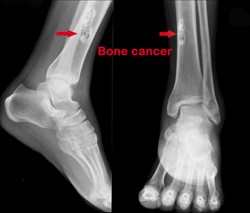Boned up on cancer-induced metastasis
Bone is often a metastatic site for many types of cancer, indicating that it constitutes an attractive microenvironment for the migration and growth of cancer cells. In addition, bone can be the primary location for osteosarcoma development. To tackle cancer cell dissemination to the bone, one needs to understand the mechanism by which such cells migrate. The scope of the EU-funded BONE-NET (European training network on cancer-induced bone diseases) project was to investigate early molecular mechanisms associated with cancer metastases and identify genes and their regulators that attract cancer cells to the bone. The ultimate goal of BONE-NET, which built on the previous European projects METABRE and PROMET, was to develop targeted therapies and discover novel diagnostic biomarkers. The consortium recruited early-stage and experienced researchers and trained them in proteomics and functional genomics, gene therapy as well as the development of novel pharmacological therapies. Researchers performed mRNA and microRNA profiling on osteosarcoma patient samples and bone marrow aspirates from patients with prostate or breast cancer. Similar profiling was undertaken in prostate cell lines, a pre-clinical model of experimentally induced bone metastasis and in breast cell lines to characterise the phenomenon of epithelial-mesenchymal transition. A list of microRNAs and proteins of interest were investigated further on patient samples. Ongoing work should clarify the role of some of these microRNAs in modulating stemness, clonogenicity and epithelial plasticity. The role of microRNAs on skeletal lesions caused by osteosarcoma and carcinomas was evaluated by non-invasive in vivo imaging technologies (radiography, fluorescence and/or bioluminescence) and bone histology and histomorphometry. From a therapeutic perspective, the consortium worked on encapsulating drugs in liposomes and developing new therapeutic approaches for bone sarcoma, including blocking gene expression in vivo. Overall, the deliverables of BONE-NET could help towards the identification of cancer patients with higher risk of relapse or bone metastasis. Furthermore, the new molecularly-oriented therapies could improve disease outcome by targeting micrometastases.







